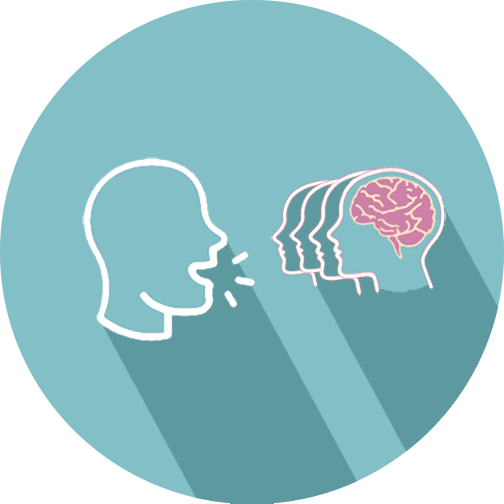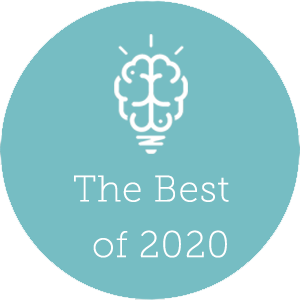On a personal note... Self-disclosing stories increase listeners’ engagement
Relevant topics Archive, Strategy
For me, personally, when I’m listening to the radio in the morning and the host is telling a personal story, I find myself immersively listening and feeling empathy. However, the moment they talk about the daily news I’m just laid back casually.
The same holds true for sales pitches where the salesperson starts by telling a bit about his personal life and background before going into the material.
Sharing personal experiences feels intimate
Telling a personal story is an important concept in social psychology called self-disclosure. It’s linked to increased liking for the narrator and essential in intimate relationships where reciprocity is expected. This follows from the famous theory of Cialdini who states with his principle of reciprocity that people feel obligated to return a favor that is given to them. Thus being openhearted makes the other person prone to reciprocate that openness, which automatically creates likeability.
I’m sure you as a marketeer already know that personal stories such as product experience reviews and other social proof statements are good drivers for attention and liking of the consumer. But how are these resembled in the brain?
Neural basis of successful communication
While the concept of self-disclosure is well known in social psychology, the neural basis was not yet uncovered. A recent study by Grall et al. (2021) investigated exactly this relationship. They had participants lie down in an fMRI and listen to four personal stories where the narrator told how certain life events led to a certain belief: for example one where the narrator’s disabled brother ran his first home run in baseball.
The study found that a measure called neural synchronicity is important during self-disclosing narratives. Neural synchrony reflects the degree to which listeners are experiencing the same emotions during the story: when the narrative is strong, listeners are engaged and thereby experiencing more similar brain activity. We already showed some examples in our previous article, where neural synchrony was related to successful communication, engagement, consumer interaction and sales.
Newneuromarketing is looking for new authors! Are you up for the job?
Send us an e-mail at tim@newneuromarketing.com to become an author and start spreading knowledge.
Self-disclosure synchronizes the brain
Self-disclosing stories were found to increase neural synchrony as compared to non-personal narratives. This means that personal narratives are reflected in a more similar way in the brain of the participants and thereby more engaging and likeable.
The implication goes further than personal narratives alone; it’s also seen in music. Previous studies by Unravel Research found that this neural metric of engagement can predict population wide popularity of music on Spotify. Thus, not only is personal narrative better at emotionally engaging your listeners, it might also extend to popularity and sales among the listeners!
But exactly what brain regions are more ‘in sync’ during this exposure? Of course, auditory areas that are related to listening were similar in all participants. Additionally, brain regions that differed between conditions were related to self-referential thinking, salience processing, social and motivational processes and memory retrieval.
This indicates that personal narratives are adept at capturing attention, facilitating comprehension and induce more engagement and emotional responses.
Let’s get personal
So, what can you do with this information? Self-disclosure can be enclosed in a wide variety of applications. For example, using a more personal story in your sales pitch can create more liking and intimacy and thereby the need for reciprocity with the listener. For example, take more time to introduce yourself, or talk about a personal event where your belief in the product/service that you’re selling was sparked.
In the same vein, a personal story in advertising can be incorporated into podcasts, blogs, commercials and especially social media. For example, it is known that engagement is also linked to similarity in the comments that people send out during live streams on social media. Live streams are extremely applicable for the use of personal storytelling.
And from the perspective of a neuromarketing researcher, this finding provides new evidence that the similarity in brain activity between respondents indeed is indicative of engagement. This strengthens the value of neural synchrony as a cornerstone in measuring successful communication, thereby validating its effectiveness to assess the impact of your messages on the consumer with neuromarketing techniques.
Key takeaways
- Self-disclosure in a narrative increases the neural synchrony among listeners, which means they’re more engaged with the narrative
- This measure is also linked to sales and thus sharing a personal story is highly efficient
- In sales pitches or advertisement or basically any communication, self-disclosure will be highly effective in engaging your audience
Further Reading
-
The 5 Best Neuromarketing Insights of 2020
With knowledge expanding increasingly fast these days it might be hard to keep track of what is new and happening in Neuromarketing. We try to review new articles weekly in order to keep you up to date on what is new.
To give you an overview of Neuromarketing insights in 2020, we’ve selected the articles that you guys found most interesting and were read the most. These are the 5 best Neuromarketing insights of 2020!


